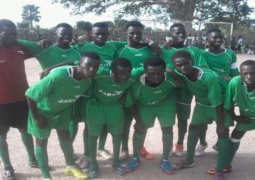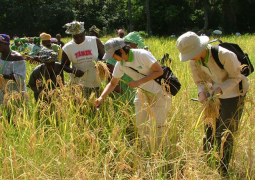Sweet water and Bitter: the ships that stopped the slave trade, Sian Rees, Vintage Books, 2010
In 1807, a bill was passed in Britain, which “utterly abolished, prohibited, and declared to be unlawful…all manner of dealing and trading” in slaves in Africa or in their transport from Africa to any other place. However, the status of slaves was not interfered with and ownership of slaves was not outlawed – that was not to happen until many years later. Penalties were introduced for those caught dealing in slaves, and the British with their powerful navy, worked hard to bring the trade to an end. In 1807, the British Commons abolished the obnoxious slave trade in all British territories and started a quick chain of events which led to many other slave trading nations such as Holland, France, Germany and USA abolishing the trade in Africans. However, some European countries like Spain and Denmark were still persisting and dealing illegally in human beings. This necessitated the British to enforce a sort of naval patrol across the waters of the West African coast to nab these pirate slave dealers. The British Royal Navy went into action and soon was arresting hundreds of pirate ships full loaded with African slaves en route to Brazil and other plantation economies. When the Navy captured the pirate ships, the human cargo was set freed and settled in Bathurst, Gambia or Freetown in Sierra Leone. These are the people called the Aku.
Sian Rees’ book traces the brilliant effort of the British Royal Navy in stamping out this illegal or sanction busting slavers. Rees reveals that while Britain was the most important player in the slave trade which lasted from the 1500s to 1807 (page 3), the acts of the Royal Navy to hunt and arrest the slave ships after the abolition act of 1807 may have helped to atone for British guilt in the inhuman trade. In other words, what sin they may have committed in leading the trade in Africans, they have atoned for in the brilliant effort of the Navy to put a definitive halt to the trade after 1807.
The Gambia played a very important role in the slave trade. Gambian territory suffered massively from the trade, wars were fought to capture slaves and Kunta Kinte island was a major slave departure point. Fort Bullen in Barra was built in 1826, the Six Gun Battery in Banjul in 1821, just to assist the Royal Navy defend the mouth of the River Gambia from the encroachment of illegal slave ships. In this book, Gambia’s role in the trade is adumbrated on pages 10, 97 and 101.
According to the author, between 1807 and 1870, the Royal Navy freed 150,000 captured Africans from the holds of the slave ships and freed them and were re-settled in Freetown or Bathurst. In the act, 17,000 British sailors died in battles mounted by the Navy to capture the slave ships.
This is a lively and glorious account by a historian who has the gift of narrative. The work is highly recommended to all students and scholars of the inhuman trade in Africans, who are interested in the efforts to implement the Abolition Act of 1807 by the Royal Navy.
Available at Timbooktoo.Tel:4494345.




